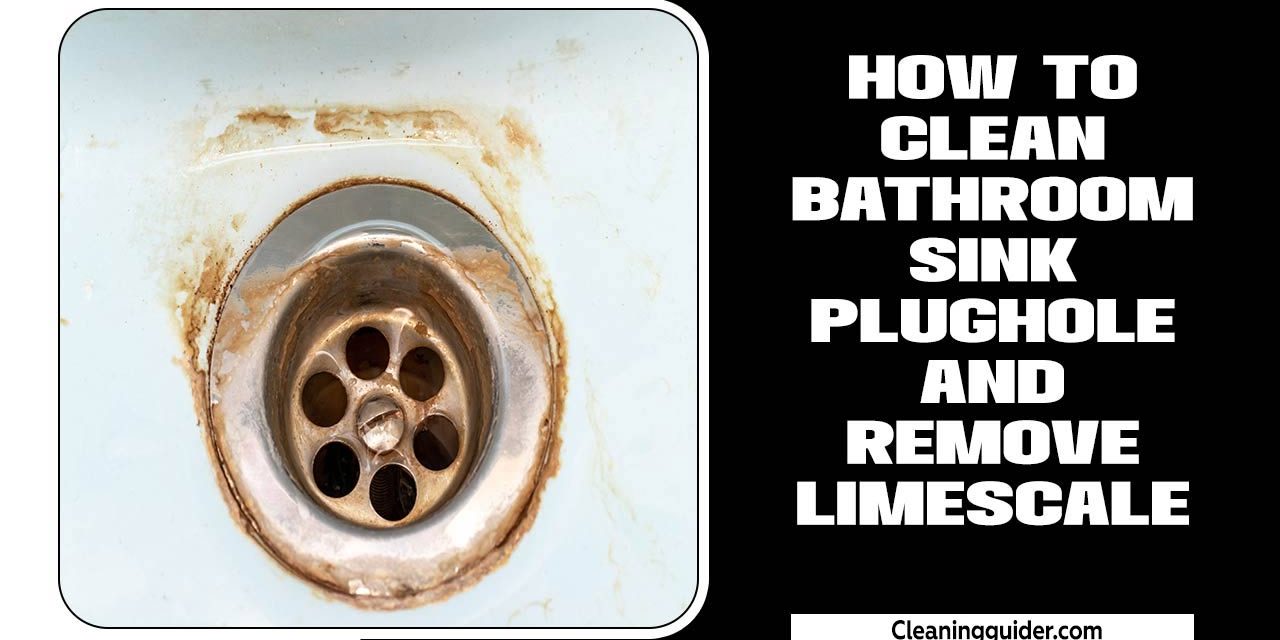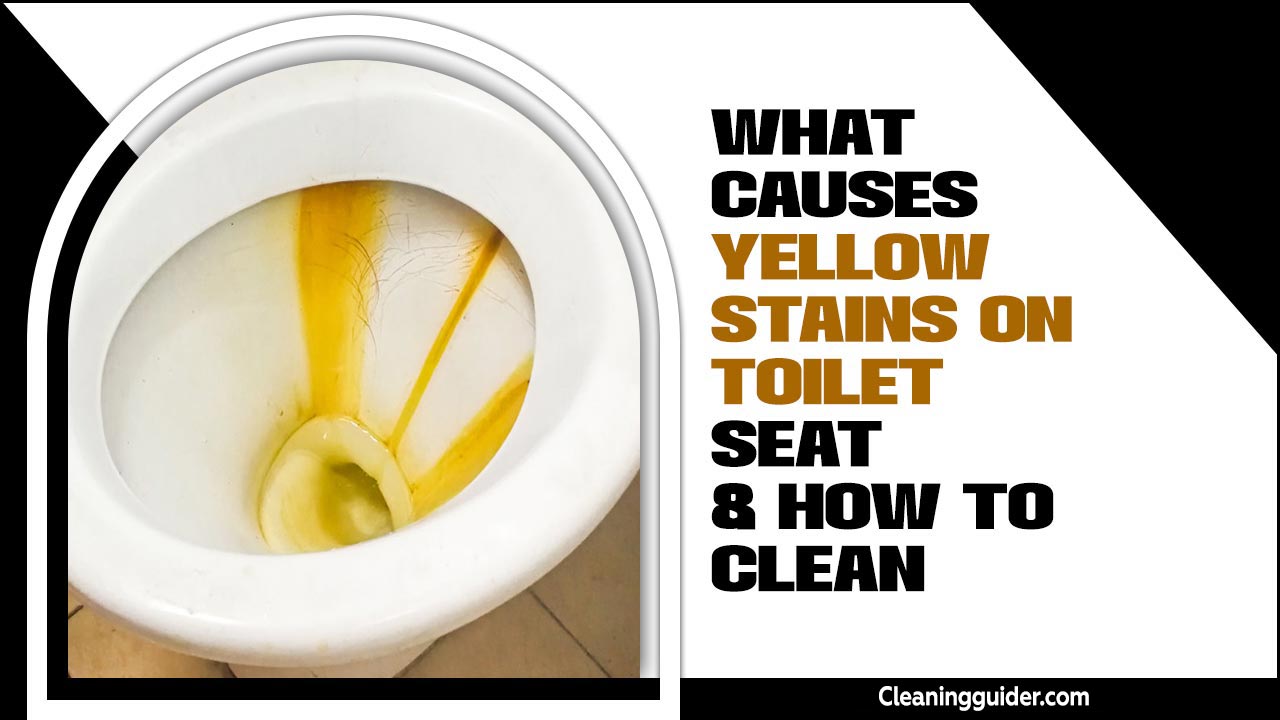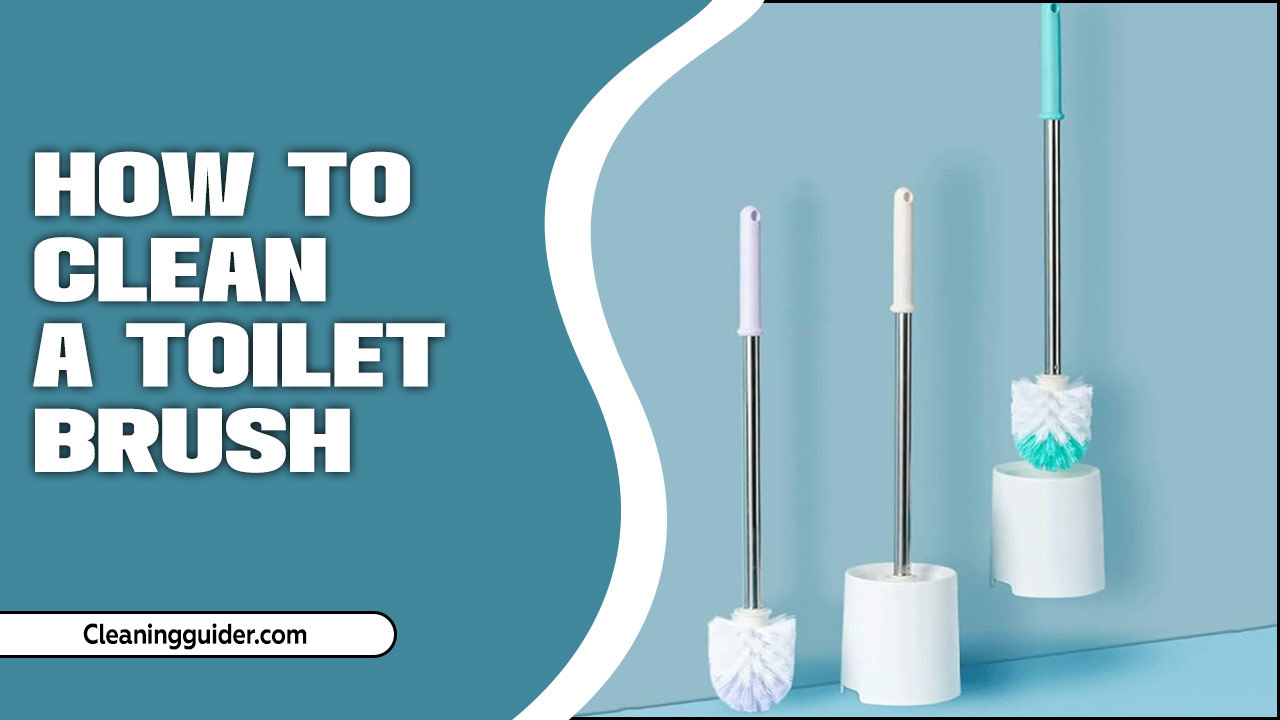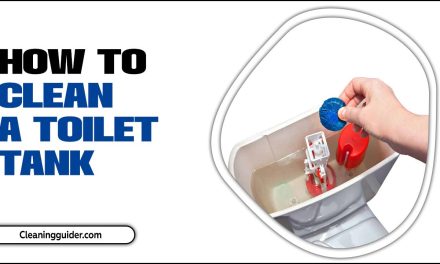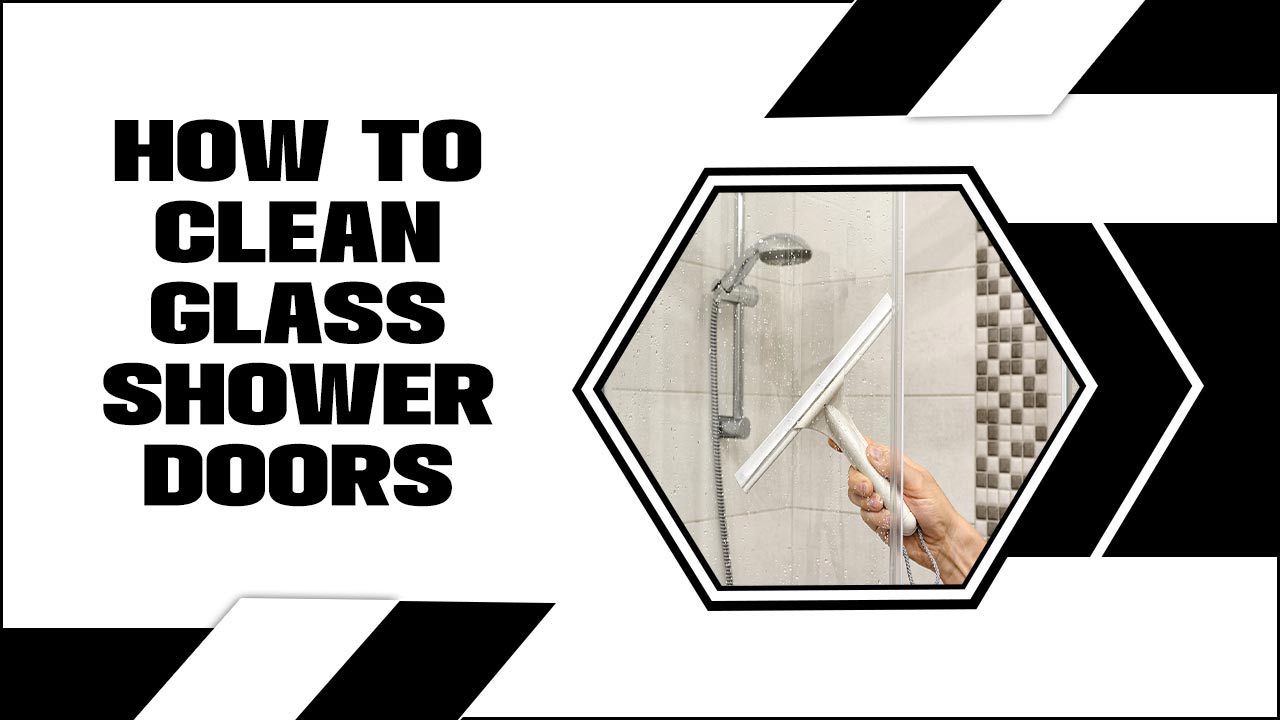Maintaining a clean and hygienic bathroom is essential for the overall health and well-being of your household. While most of us regularly clean the surfaces and fixtures in our bathrooms, the plughole of the sink often goes unnoticed.
Over time, the constant use of the sink leads to the accumulation of dirt, grime, and limescale in the plughole, causing unpleasant odors and clogging. Ignoring the cleaning of the plughole can result in costly repairs in the future.
Here, we will explore what limescale is, its impact on bathroom fixtures, and different ways to clean sink materials based on what type of sink you have. We will also cover eight easy ways to remove limescale from your bathroom sink plughole using natural ingredients like vinegar and baking soda or lemon juice, as well as with commercial products. We will discuss how to clean bathroom sink plughole and remove limescale.

What Is Limescale
Limescale, a buildup of minerals like calcium and magnesium, can accumulate in your bathroom sink plughole over time. This can lead to blockages, unpleasant odors, and even damage to your plumbing. Luckily, there are effective methods for removing limescale.
You can use vinegar, baking soda, or specialized cleaning products to tackle the problem. Additionally, regular cleaning and maintenance can help prevent limescale buildup and keep your sink functioning properly.
The Impact Of Limescale On Bathroom Fixtures
Hard water leaves behind limescale deposits that can damage fixtures. These mineral deposits not only affect the water flow in your bathroom sink but also create blockages if left unchecked. Additionally, limescale can leave stubborn stains and watermarks on bathroom fixtures, diminishing their appearance.
Ignoring limescale problems can lead to expensive repairs and replacements. Regular cleaning using effective methods such as vinegar solution or specialized bathroom cleaners is necessary to prevent limescale buildup and maintain the optimal functioning of your fixtures.
How To Clean Different Sink Materials
Cleaning your bathroom sink plughole and removing limescale is an important part of maintaining a clean and hygienic bathroom. However, it’s important to note that different sink materials may require different cleaning methods. Here are some tips on how to clean different sink materials:
- Porcelain Or Ceramic Sinks: For porcelain or ceramic sinks, you can use a mixture of baking soda and water to create a paste. Apply the paste to the sink surface and let it sit for a few minutes before scrubbing with a soft brush or sponge. Rinse thoroughly with water.
- Stainless Steel Sinks: To clean stainless steel sinks, you can use a mild dish soap and warm water solution. Apply the solution to the sink surface and scrub gently with a non-abrasive sponge or cloth. Rinse thoroughly with water and dry with a clean towel to prevent water spots.
- Stone Or Granite Sinks: Stone or granite sinks should be cleaned using a pH-neutral stone cleaner. Avoid using abrasive cleaners or scrub brushes, as they can scratch the surface of the sink. Instead, use a soft cloth or sponge to clean the sink gently. Rinse thoroughly with water and dry with a clean towel.
Remember always to read and follow the manufacturer’s instructions for cleaning your specific sink material. Regular cleaning and maintenance will help keep your bathroom sink looking its best and prevent limescale buildup.
How To Clean Bathroom Sink Plughole And Remove Limescale: 8 Easy Ways

Cleaning the bathroom sink plughole and removing limescale can be a daunting task, but with the right techniques, it can be a breeze. A bathroom sink is an essential fixture in any bathroom. It not only serves a functional purpose but also adds to the overall aesthetic of the space. There are various types of bathroom sinks available, including pedestal sinks, wall-mounted sinks, undermount sinks, and vessel sinks.
Limescale is a common problem in many households, but fear not! There are several effective methods for removing limescale and restoring the shine to your fixtures. Remember always to follow safety precautions when working with cleaning products and consult the manufacturer. Here are 8 easy ways how to clean bathroom sink plughole and remove limescale.
1.Vinegar And Baking Soda

To remove limescale buildup from your bathroom sink plughole, mix equal parts of vinegar and baking soda to create a paste. Apply the paste to the plughole and let it sit for a few minutes. Then, use a toothbrush or small brush to scrub the plughole and remove any limescale deposits. Rinse the plughole with hot water to get rid of any remaining residue. Repeat the process if needed to eliminate the limescale completely.
2.Lemon Juice
Limescale buildup in bathroom sink plugholes can cause blockages and unpleasant odors. An effective solution for cleaning sink plugholes is lemon juice, which is natural and safe to use. Simply pour lemon juice down the sink to dissolve limescale and eliminate any unpleasant odors.
Let the lemon juice sit in the sink for a few hours or overnight before rinsing with hot water. Regular cleaning and maintenance can help prevent limescale buildup and keep your sink smelling fresh.
3.Boiling Water
Limescale buildup in bathroom sink plugholes can cause them to clog and emit unpleasant odors. To remove limescale, you can use vinegar, baking soda, lemon juice, or boiling water. However, when using boiling water, be cautious to prevent any damage to plastic components.
Additionally, taking preventive measures like using a drain stopper or hair catcher can help prevent limescale buildup in the future. Regular cleaning and maintenance are essential for keeping your bathroom sink plughole free from limescale problems.
4.Salt And Vinegar
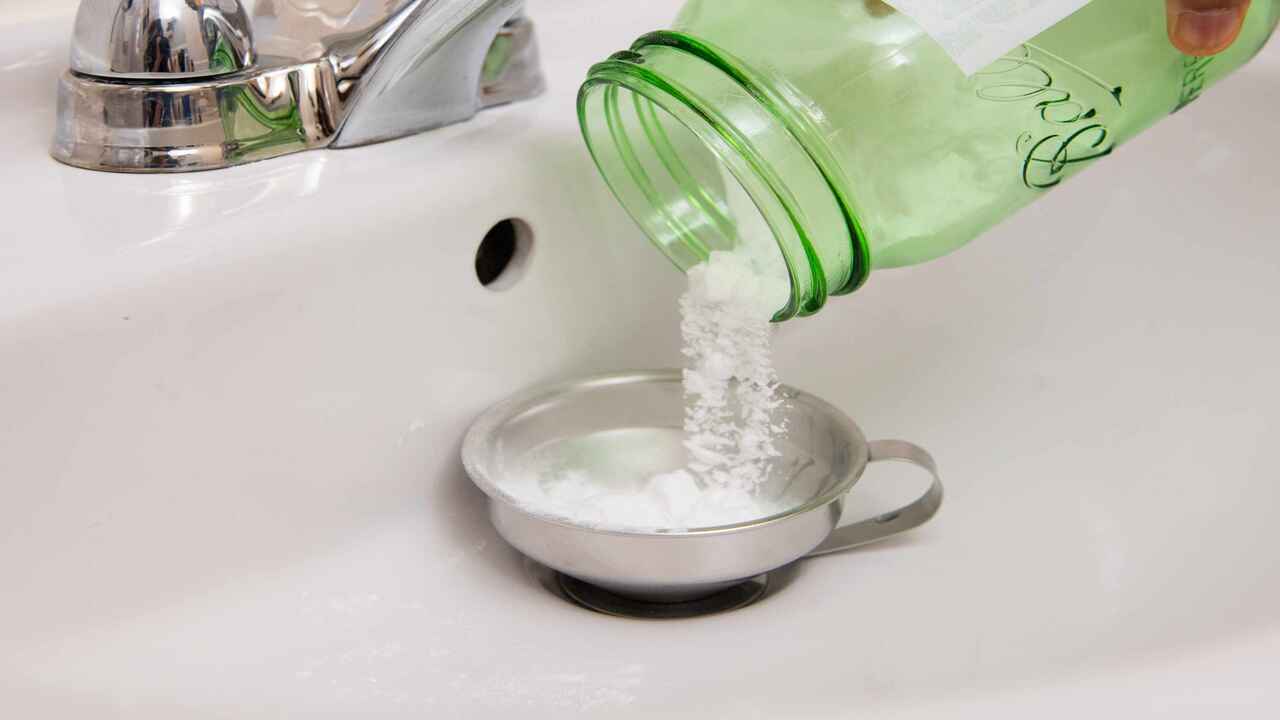
An effective solution for removing limescale buildup in the bathroom sink plug-hole is to use a mixture of salt and vinegar. By creating a paste with equal parts salt and vinegar, you can apply it to the affected area and let it sit for about 30 minutes.
Afterward, rinse the area with warm water and scrub away any remaining residue with a brush or sponge. Regular cleaning and maintenance of the bathroom sink are crucial to preventing limescale buildup and ensuring proper functionality.
5.Commercial Limescale Remover
When it comes to removing limescale from your bathroom sink plughole, there are several options to consider. You can start with simple methods like using baking soda and vinegar or lemon juice. Another effective technique is to use a plunger to remove any blockages in the sink.
If you notice visible debris, try using a wire hanger to clear it out. For tougher stains, a mixture of water and bleach can be helpful. And if none of these methods works, you might want to consider using a commercial limescale remover, following the instructions carefully.
6.Toothbrush Or Pipe Cleaning Brush

To maintain hygiene in your bathroom sink, it is important to clean the plughole and remove limescale buildup. Household items like vinegar and baking soda can effectively dissolve limescale. For hard-to-reach areas, a toothbrush or pipe-cleaning brush works well.
Regular maintenance, such as pouring hot water down the drain, helps prevent future limescale buildup. However, severe buildup or clogs may require professional plumbing services. Keeping your bathroom sink clean and free of limescale ensures optimal functionality and a hygienic environment.
7.Plunger
To remove limescale and maintain a clean bathroom sink plughole, start by using a mixture of vinegar and baking soda. Scrub the plughole with a toothbrush or small brush to remove any debris or buildup. Boil water and pour it down the plughole, helping dissolve any remaining limescale.
If needed, you can consider using a commercial drain cleaner, but follow the instructions carefully. For stubborn clogs, use a plunger to clear the sink drain. Remember to regularly clean the sink and plughole to prevent buildup and clogs.
8.Regular Maintenance
Regularly cleaning the sink plughole is essential to prevent the buildup of limescale and other debris. One effective method is to use a mixture of baking soda and vinegar, which helps break down the limescale. In case of stubborn blockages, a plunger can be used to dislodge them.
Additionally, a drain snake can be helpful in removing blockages from the pipes. It is important to avoid using harsh chemicals as they can damage the pipes and harm the environment. Regularly pouring hot water down the sink can also help prevent the buildup of limescale.
Maintaining A Limescale-Free Bathroom Sink

Maintaining a limescale-free bathroom sink is essential for keeping your bathroom clean and hygienic. Limescale can build up over time, leaving unsightly stains and reducing the efficiency of your sink. To remove limescale from your bathroom sink plughole, you can follow these steps:
- Start by pouring a generous amount of white vinegar into the plughole. The acidity of the vinegar will help dissolve the limescale.
- Let the vinegar sit for about 30 minutes to an hour, allowing it to penetrate and break down the limescale.
- After the vinegar has had time to work its magic, scrub the plughole using a small brush or an old toothbrush. This will help loosen any remaining limescale and ensure a thorough clean.
- Rinse the plughole with hot water to flush away any loosened limescale and vinegar residue.
- For stubborn limescale buildup, you may need to repeat this process or consider using a commercial limescale remover specifically designed for bathroom surfaces.
By regularly cleaning and maintaining your bathroom sink plughole, you can keep it free from limescale and ensure optimal performance. Remember to also wipe down your sink after each use to prevent water spots and keep it looking sparkling clean.
Is It Necessary To Remove Limescale Regularly?
Regularly removing limescale from your bathroom sink plughole is necessary to maintain the cleanliness and functionality of your sink. Limescale can build up over time and cause blockages, which can lead to water not draining properly. Additionally, limescale can also make your sink look dirty and dull.
By regularly removing limescale, you can ensure that your sink remains clean and free from any potential plumbing issues. There are various methods and products available for removing limescale, such as using vinegar or specialized descaling solutions. It is recommended to clean your bathroom sink plughole at least once a month or more frequently if you have hard water in your area.
What Are The Long-Term Effects Of Ignoring Limescale Build-Up?
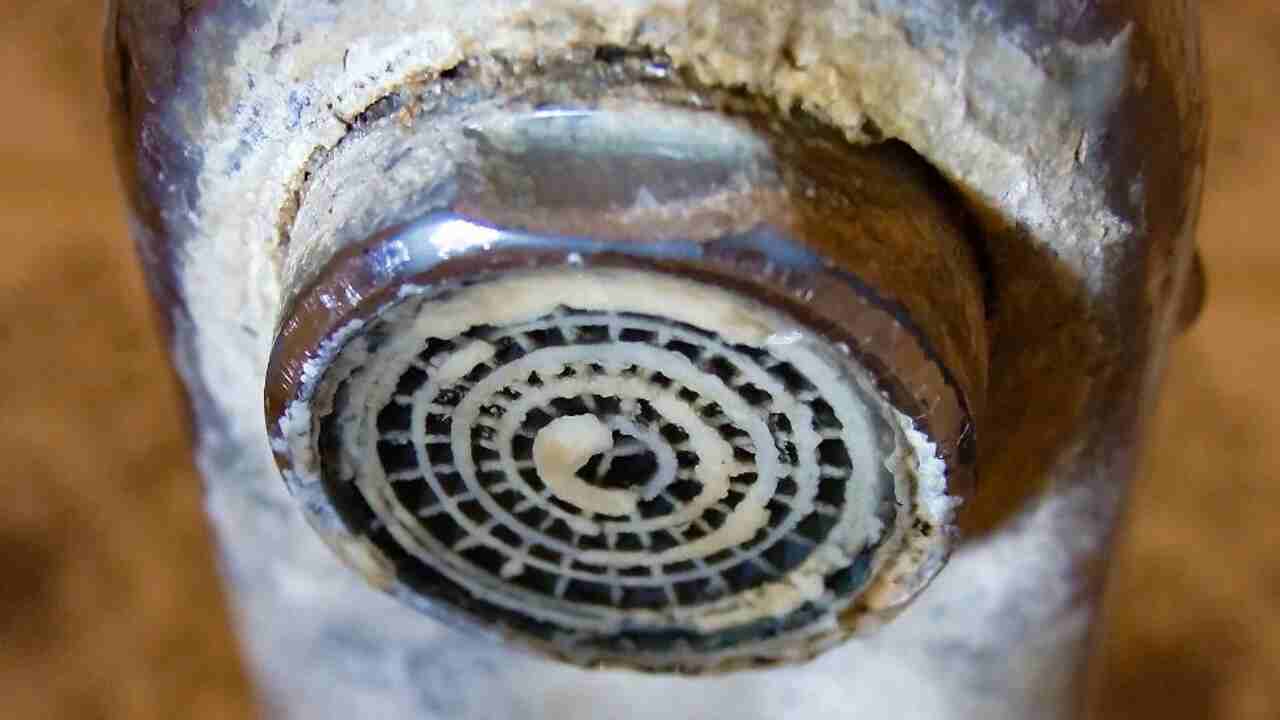
Ignoring limescale build-up in your bathroom sink plughole can have long-term negative effects. Over time, limescale can accumulate and clog the plughole, causing water to drain slowly or not at all. This can be frustrating and inconvenient, as well as unhygienic. Additionally, limescale build-up can also affect the appearance of your sink, leaving behind unsightly stains and discoloration.
Furthermore, if left untreated, limescale can cause damage to the plumbing system and fixtures, leading to costly repairs or replacements. Therefore, it is important to regularly clean and remove limescale from your bathroom sink plughole to avoid these long-term consequences.
Conclusion
To maintain a clean and limescale-free bathroom sink, it is important to clean and remove limescale buildup regularly. There are several easy and effective ways to do this, such as using vinegar and baking soda, lemon juice, boiling water, salt and vinegar, commercial limescale remover, a toothbrush or pipe cleaning brush, a plunger, and regular maintenance.
Ignoring limescale build-up can have long-term effects on your bathroom fixtures. It can lead to reduced water flow, clogged drains, and damage to the sink surface. Regularly removing limescale not only keeps your sink looking clean and shiny but also helps prevent these issues. We hope you know how to clean bathroom sink plughole and remove limescale.
Frequently Asked Questions
1.How Do You Get Limescale Off A Sink Plug Hole?
Ans: To remove limescale from a sink plug hole, create a mixture of equal parts vinegar and baking soda. Pour it down the drain and let it sit for at least 30 minutes. Use a toothbrush or small brush to scrub the plughole thoroughly, then rinse with hot water. Repeat if needed, or try a commercial limescale remover.
2.How Do You Clean Bathroom Plug Holes?
Ans: To clean bathroom plug holes, start by removing any debris or hair using gloves or a tool. Then, make a mixture of baking soda and vinegar and pour it down the plughole. Let it sit for 10-15 minutes before pouring hot water down the drain. For tougher clogs, you can use commercial drain cleaners or bleach, but follow instructions carefully.
3.What Dissolves Limescale In Pipes?
Ans: To effectively dissolve limescale in pipes, you can rely on white vinegar, a natural and efficient solution. Create a mixture of equal parts water and vinegar, pour it down the drain, and let it sit for a few hours. Alternatively, you can use a commercial limescale remover, following the instructions carefully.
4.What Will I Need To Remove Limescale?
Ans: To remove limescale, you’ll need white vinegar, baking soda, a spray bottle, a scrub brush or sponge, and some elbow grease. For tougher stains, use a commercial limescale remover or a mixture of white vinegar and citric acid. Always wear gloves and ventilate the area when using chemical cleaners.
5.How Do You Remove Limescale From A Bathroom Faucet?
Ans: To remove limescale from a bathroom faucet, create a mixture of white vinegar and baking soda. Apply the mixture to the affected area using a cloth or sponge, and let it sit for a few minutes. Scrub with a toothbrush or scrub brush, rinse thoroughly and dry with a towel.

